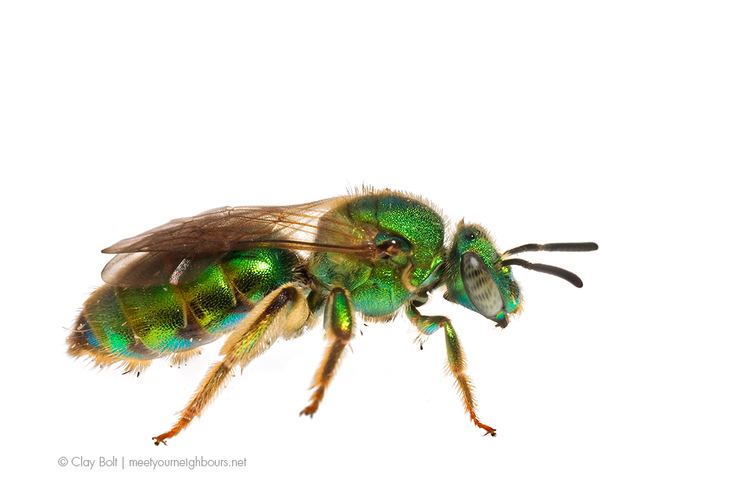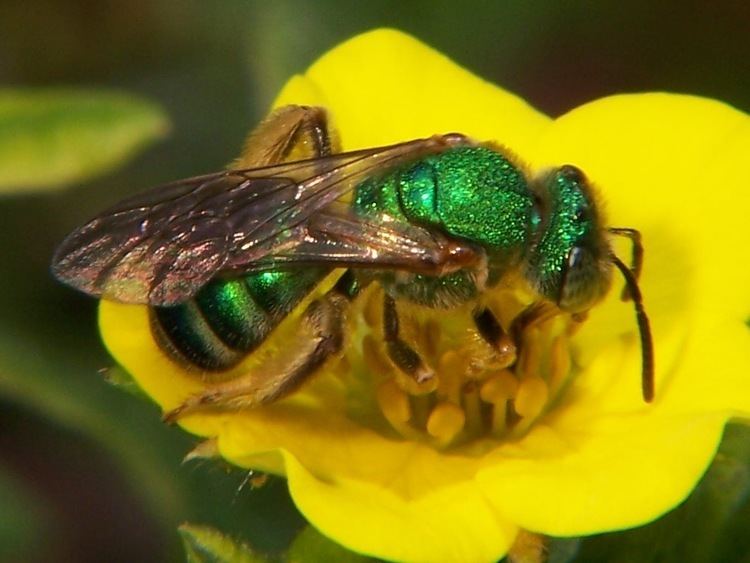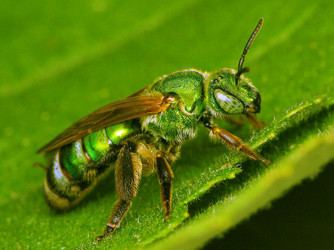Subphylum Hexapoda Suborder Apocrita Scientific name Halictidae Rank Family | Higher classification Bee | |
 | ||
Lower classifications Lasioglossum, Halictus, Agapostemon, Augochloropsis, Dufourea | ||
Insects under microscope turkish hymenoptera diapriidae halictidae formicidae ankara turkey
The Halictidae is the second largest family of Apoidea bees. Halictid species occur all over the world and are usually dark-colored and often metallic in appearance. Several species are all or partly green and a few are red; a number of them have yellow markings, especially the males, which commonly possess yellow faces, a pattern widespread among the various families of bees.
Contents
- Insects under microscope turkish hymenoptera diapriidae halictidae formicidae ankara turkey
- Sweat bee halictidae agapostemon in burrow opening
- Ecology
- Eusocial species
- Cleptoparasitic species
- Nocturnal species
- Species of economic importance
- Phylogeny
- Systematics
- References

They are commonly referred to as "sweat bees" (especially the smaller species), as they are often attracted to perspiration. They are likely to sting only if disturbed; the sting is minor.

Sweat bee halictidae agapostemon in burrow opening
Ecology

Most halictids nest in the ground, though a few nest in wood, and they mass-provision their young (a mass of pollen and nectar is formed inside a waterproof cell, an egg laid upon it, and the cell sealed off, so the larva is given all of its food at one time, as opposed to "progressive provisioning", where a larva is fed repeatedly as it grows, as in honey bees). All species are pollen feeders and may be important pollinators.
Eusocial species

Many species in the subfamily Halictinae are eusocial at least in part, such as Lasioglossum malachurum or Halictus rubicundus, with fairly well-defined queen and worker castes (though not the same as the caste system in honey bees), and certain manifestations of their social behavior appear to be facultative in various lineages. Those species who do not have a permanent, rigid, division of labor, such as Lasioglossum zephyrum, are considered primitively eusocial. Another example of a primitive eusocial bee species from this family is the Halictus ligatus species, for which aggression is one of the most influential behavioral attitudes for establishing hierarchy and social organization within the colony. Primitively eusocial species such as these provide insight into the early evolution of eusociality. Halictus sexcinctus, which exhibits social, communal, and eusocial organization, provides insight into the evolutionary reversal of eusociality. Phylogenetic data from this species suggests that a communal strategy serves as a transitional step between eusociality and a reversion back to solitary nesting.
Cleptoparasitic species

Several genera and species of halictids are cleptoparasites of other bees (mostly other halictids), and the behavior has evolved at least 9 times independently within the family. The most well-known and common are species in the genus Sphecodes, which are somewhat wasp-like in appearance (often shining black with blood-red abdomen- German: Blutbienen - usually 4–9 mm in body length); the female Sphecodes enters the cell with the provision mass, eats the host egg, and lays an egg of her own in its place.
"Nocturnal" species

Halictidae are one of the four bee families that contain some crepuscular species; these halictids are active only at dusk or in the early evening, so are technically considered "vespertine" (e.g. in the subgenus Sphecodogastra of Lasioglossum), or sometimes truly nocturnal (e.g. in the genus Megalopta, or species Megalopta genalis). These bees, as is typical in such cases, have greatly enlarged ocelli. The other families with some crepuscular species are Andrenidae, Colletidae, and Apidae.
Species of economic importance
Some species are important in the pollination of crops. Among these are the alkali bee, Lasioglossum vierecki and Lasioglossum leucozonium.
Phylogeny
The Halictidae belong to the hymenopteran superfamily Apoidea, series Anthophila. The oldest fossil record of Halictidae dates back to Early Eocene with a number of species, such as Neocorynura electra and Augochlora leptoloba known from amber deposits. Currently, the family is divided into four subfamilies, many genera and more than 2000 known species. The Rophitinae appear to be the sister group to the remaining three subfamilies (Nomiinae, Nomioidinae, Halictinae) based on both morphology and molecular data.
Systematics
Rophitinae:
Nomiinae:
Nomioidinae:
Halictinae:
